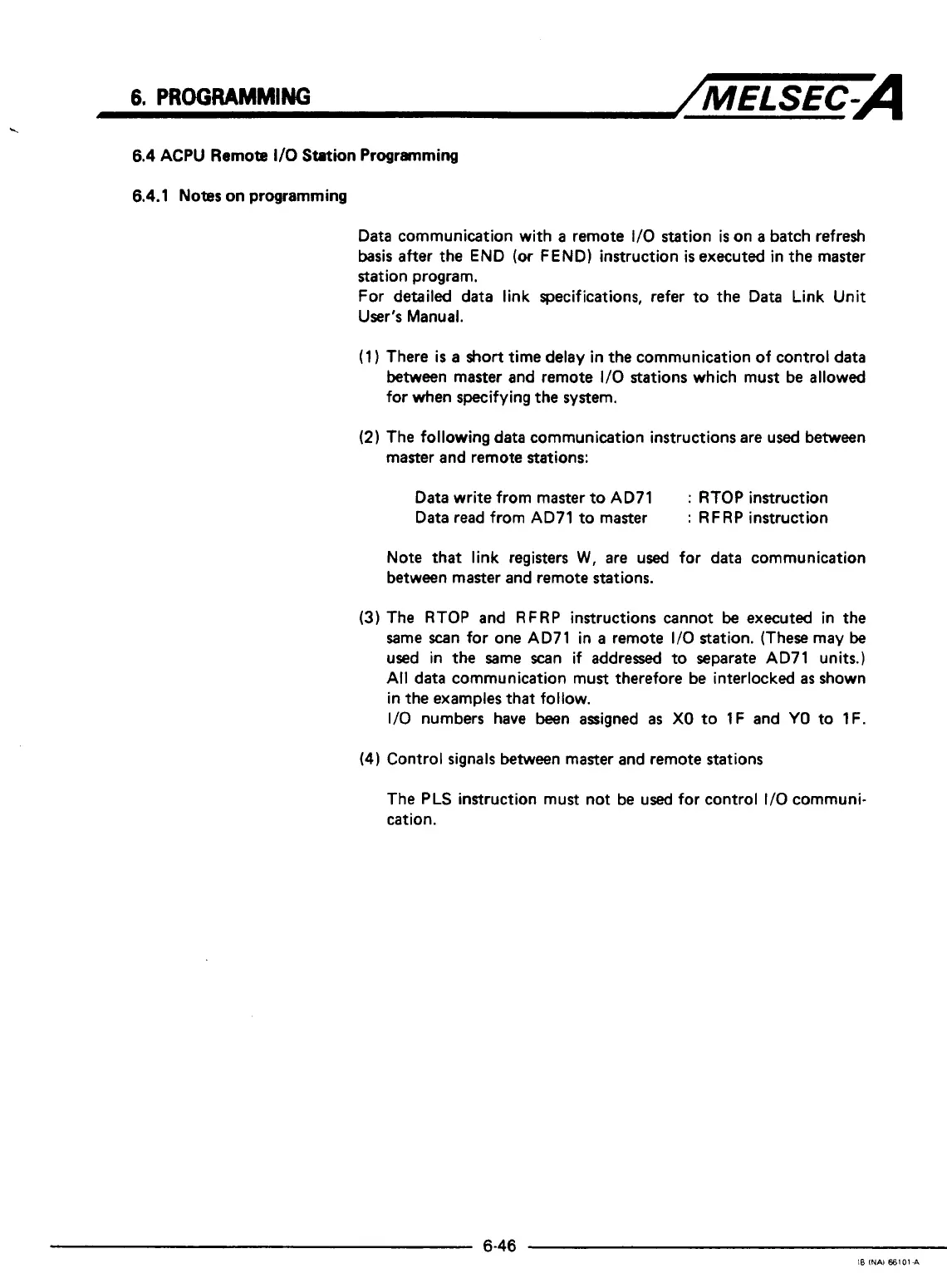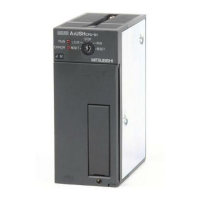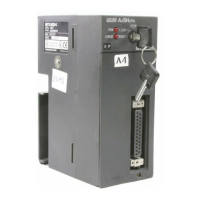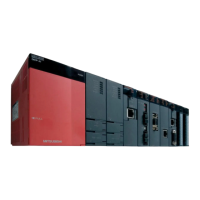6.
PROGRAMMING
/MELSEC-A
6.4
ACPU
Remote
I/O
Station
Programming
6.4.1
Notes
on programming
Data communication with
a
remote
1/0
station
is
on
a
batch refresh
basis
after the
END
(or
FEND)
instruction
is
executed in the master
station program.
For detailed data link specifications, refer to the Data Link Unit
User’s Manual.
(1
)
There
is
a
short
time delay in the communication of control
data
between master and remote
1/0
stations which must be allowed
for when specifying the system.
(2)
The following data communication instructions are used between
master and remote stations:
Data write from master to AD71
:
RTOP instruction
Data read from AD71 to master
:
RFRP
instruction
Note that link registers
W,
are used for data communication
between master and remote stations.
(3)
The
RTOP
and
RFRP
instructions cannot
be
executed in the
same scan for one AD71 in
a
remote
1/0
station. (These may
be
used in the same scan if addressed to separate AD71 units.)
All data communication must therefore be interlocked
as
shown
in the examples that follow.
1/0
numbers have been assigned
as
X0
to 1F and
YO
to 1F.
(4)
Control signals between master and remote stations
The PLS instruction must not be used for control
1/0
communi-
cation.
6-46
I6
lNAl
66101P
